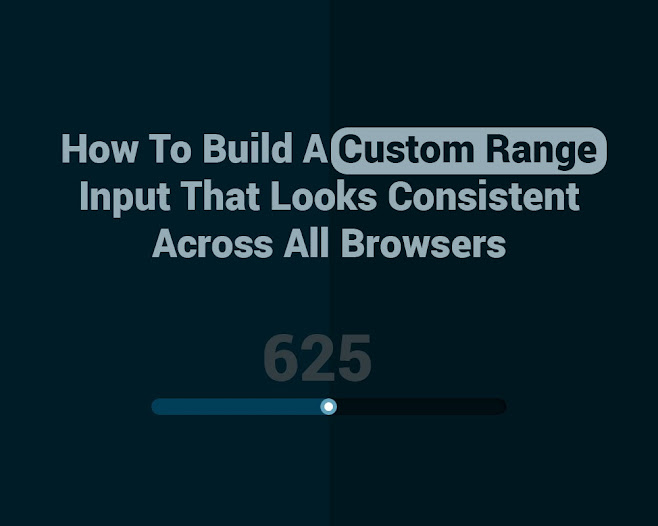How To Build A Custom Range Input That Looks Consistent Across All Browsers
 |
A range input is a type of control that allows you to specify numbers in a specific range. This helps users to enter numeric values, such as how many items are in their shopping cart or the number of emails they want to send. In this article, we’ll explore the ins and outs of creating a custom range input and how it can save time for your web form. When building a website, or using a typical form of user input on your webpage, it is important that the text you enter looks the same on all browsers because many people use a range input from their computer. This can be difficult to work around with the inconsistent functionality and lack of support in older browsers. In this article find out how to create a custom range input that even works for users who have an older browser!
What Makes A Range Input Consistent?
The purpose of a range input is to allow users to input a number and get back a value that falls within a certain range. The question, then, is what makes one input consistent across all browsers? The first thing to consider when building a range input that looks consistent across all browsers is finding the right choice of font color. The range input has a number of options that can make it look good across browsers, but there are some specific things that you should know.
Why Create A Custom Range Input?
Range input is an input designed to display the value of a number in a user-defined range. A range input is useful when you want your text or numbers to appear consistent across all browsers, even though they are using different units and different numbers that represent the same value. You create a range input by implementing two inputs and then adding them together. The range input is a tiny little input that allows you to select an option on your form, but it’s not just a standard input like most! It’s worth the time and effort to invest in building your own range input because it can be tailored to look consistent across all browsers and devices.
How To Build A Custom Range Input
There are a lot of different range inputs that you can use, like the “range input” button in the top left corner or the slider below it. While these work well for general use, you might find your own preference for a range input to be more customized and better suited to your needs. This article will show you how to do this by creating a custom range input that works across all browsers. With the advent of responsive design and the use of CSS media queries, we’re able to create custom functionality for our range inputs. These ranges can then be applied to 80% of all browsers and devices. With this in mind, we will explore how to build a range input that looks consistent across all browsers.
How to Name Your Custom Range Input and Make It Look Consistent Across All Browsers
To name your custom range input, use the following format: “value {number}-{number}” Be sure to remember that the first number is the value and the second number is the max value. For example, a custom range input with a value of 0-100 would be named “value0-100”. The name of your input should be consistent across all browsers. The best way to do this is with a CSS class. A good range input name might be “start”, “end”, “max”, or “values”.
Necessary And Optional CSS To Create a Custom Range Input
To create a custom range input that looks consistent across all browsers and screens, you will need to use CSS. This is necessary because the browser-specific styles and HTML elements that range inputs use vary from browser to browser. Optional CSS includes border, text color, etc. There are a couple of options we need to keep in mind when building a custom range input. Each browser is different from the others and their default styles might not be what you want (e.g. font size, text color, etc.).


Comments
Post a Comment